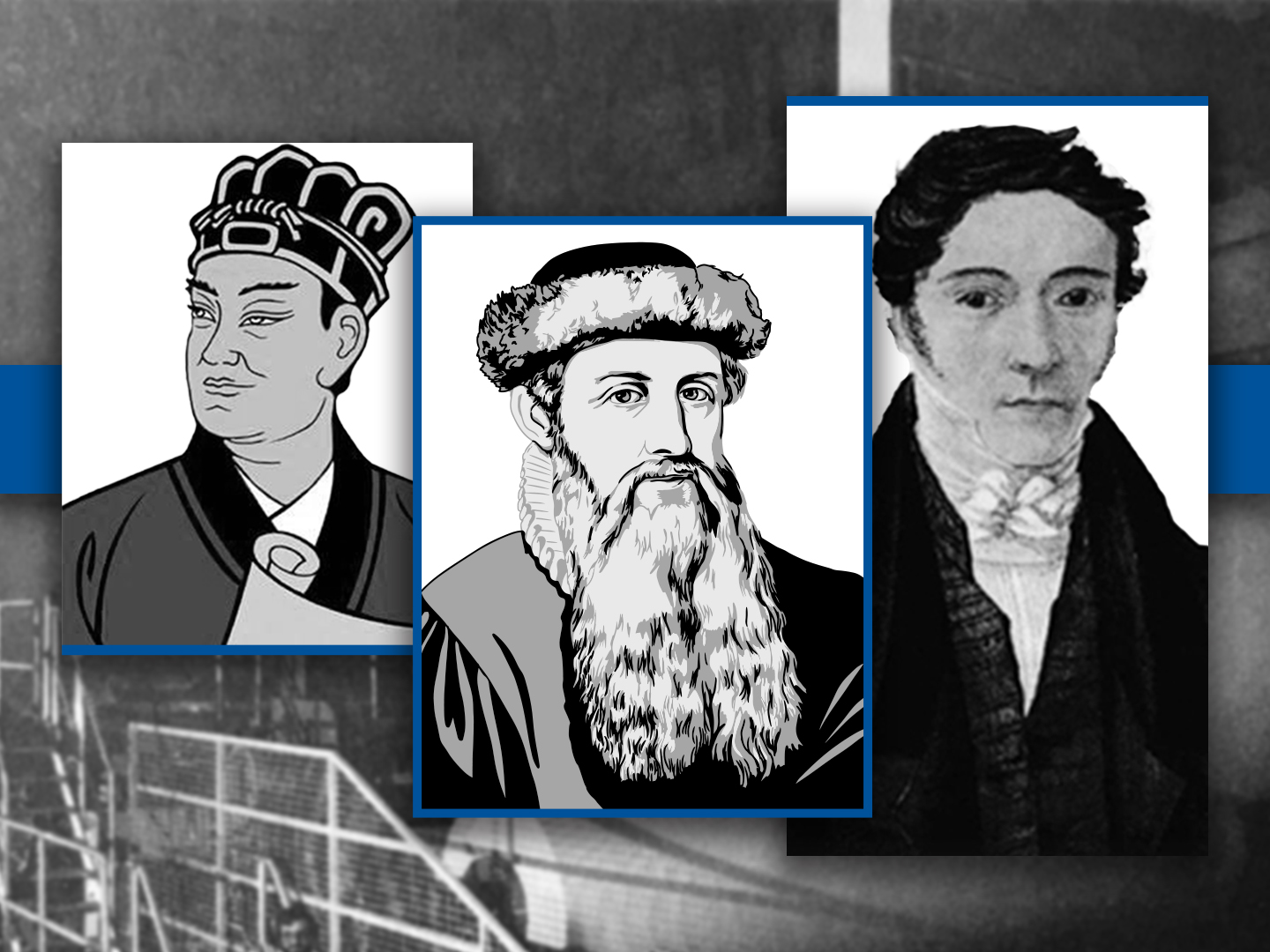May is National Inventors Month, a time to honor the groundbreaking ideas and creations that have advanced society. Consider the inventions related to paper, an item that has transformed how we communicate, store information and share knowledge.
Here are some paper inventions that have made our lives better in profound ways, every day.
Ts’ai Lun, inventor of paper
The world changed in 105 CE, when one man mixed chopped mulberry bark, hemp rags and water to form a pulp. A Chinese court official named Ts’ai Lun (Cai Lun) pressed this mixture flat and hung it to dry, creating the first paper. Paper was easier to write on than the silk or bamboo used previously. As a result, scribes could produce books and maps faster and more efficiently.
While it took another 300 years for Ts’ai Lun’s invention to reach the Middle East, and 500 more to reach Europe, this invention forever transformed the spread of knowledge and human communication.
Johannes Gutenberg, inventor of the printing press
What would National Inventors Month be without recognizing this important innovation? While the invention of paper was revolutionary, anything mass-produced still required scribes to painstakingly hand-copy text, letter by letter. China worked to speed this process by inventing woodblock printing in about 800 CE, a process that involved chiseling text backward into a wood block, applying ink and pressing pages against the block.
In 1436, German goldsmith Johannes Gutenberg invented a groundbreaking solution that would allow mass printing: The Gutenberg Press. It worked by arranging and blocking individual letters and symbols into a frame called a composing stick. The composed type was then inked and pressed onto paper using a lever in order to print pages of text.
The printing press is widely considered to be one of the most important inventions in history for its impact on education, literacy and the spread of knowledge. It paved the way for the modern printing industry and is still used today in many forms, including digital printing.
Louis Robert and the Fourdrinier brothers, inventors of the papermaking machine
After the French Revolution, sergeant major Louis Robert took a factory job in the suburbs of Paris. There, paper was made by hand, one sheet at a time. He saw how tedious papermaking was and how unhappy the workers were, so he found a way to mechanize the process so it would be faster and more efficient. In 1798, Robert created the first machine to produce a continuous roll of paper.
Henry and Sealy Fourdrinier made improvements to the machine in England within 20 years of Robert’s initial invention, and today that invention is known as the Fourdrinier papermaking machine. It has played a crucial role in the development of modern printing and publishing, enabling the fast and cost-effective production of large quantities of high-quality paper, which made it possible for books, newspapers and other printed materials to be produced more easily and at a lower cost.
Although the papermaking machine was first invented more than two centuries ago, you can still find Fourdrinier machines making rolls of paper in nearly every operating paper mill today.
George H. Tomlinson, inventor of the recovery boiler
An employee of a Domtar predecessor company made a breakthrough innovation in the paper industry in the early 1930s. George H. Tomlinson was a researcher who worked for the Howard Smith Paper Mill — which eventually became Domtar — in Cornwall, Ontario. Tomlinson’s invention of a recovery boiler made the papermaking process cleaner.
Black liquor is a byproduct of the paper manufacturing process, and paper mills used to dispose of their waste by burning or dumping it. The Tomlinson recovery boiler burned the black liquor at extremely high temperatures to separate the organic materials from the inorganic ones. The organic materials were then converted into usable chemicals and energy to manufacture more paper.
The Tomlinson recovery boiler was a game changer for the paper industry, allowing mills to reduce their waste and become better stewards of the environment. Today, every modern pulp mill worldwide runs a Tomlinson-style furnace, which is now built by many different brands.
Changing the world through innovations in paper
Paper has become essential to how humans communicate. Throughout history, it’s played a crucial role in the development of writing, printing, education, science, art and culture, making it one of the most significant inventions in human history.
During National Inventors Month, we celebrate these paper innovations that positively impact our daily lives and will continue to shape the course of human civilization for years to come.
